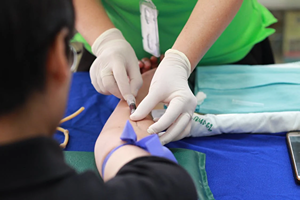Introduction
In the complex world of healthcare, patient safety remains a paramount concern. With a myriad of processes and protocols in place, ensuring that every patient receives optimal care is both an art and a science. However, despite best efforts, mistakes can and do occur. The phrase “to err is human” rings particularly true in healthcare settings where the stakes are incredibly high. This article delves into the vital theme of Learning from Past Mistakes: Improving Patient Safety Protocols. By examining past errors, understanding their implications, and implementing robust strategies for improvement, healthcare providers can significantly enhance patient safety.

Learning from Past Mistakes: Improving Patient Safety Protocols
The journey towards improved patient safety protocols cannot be fully realized without acknowledging and learning from past mistakes. Historical data shows that preventable medical errors can have devastating effects on patients' health outcomes, leading to increased morbidity and mortality rates in some cases.

Understanding Medical Errors
What Are Medical Errors?
Medical https://www.moseleycollins.com/medical-malpractice-lawyer-in-fairwood-wa.html errors refer to preventable adverse effects caused by inappropriate actions or failures during the provision of healthcare services. These errors can stem from various sources:
- Diagnostic Errors: Misdiagnosis or delayed diagnosis. Medication Errors: Incorrect dosages or wrong medications being administered. Surgical Errors: Mistakes made during surgical procedures.
The Impact of Medical Errors on Patient Safety
The implications of medical errors extend beyond individual patients; they affect families, healthcare providers, and entire health systems. According to the World Health Organization (WHO), tens of millions of patients worldwide are harmed every year due to unsafe care practices.
Historical Case Studies in Healthcare
Notable Examples of Medical Errors
The Institute of Medicine Report (1999): Known as "To Err is Human," this groundbreaking report estimated that between 44,000 to 98,000 people die each year as a result of medical errors in hospitals.
Heparin Overdoses: In 2006, a series of heparin overdoses led to numerous deaths due to medication error resulting from mislabeling.
Wrong-Site Surgeries: Various documented instances highlighted how such grave oversights could occur even with established protocols in place.
Analyzing Root Causes of Errors
Systems Thinking Approach
Understanding that many medical errors arise not just from individual negligence but from systemic flaws is crucial. A systems thinking approach allows healthcare organizations to identify underlying issues contributing to errors.
Communication Breakdown: Poor communication among healthcare providers leads to misunderstandings about treatment plans.
Inadequate Training: Insufficient training for staff members on new protocols or technologies may result in mishaps.
Workflow Issues: Inefficient workflows can create bottlenecks that increase the risk for errors.
Implementing Change: Building Safer Systems
Creating a Culture of Safety
Establishing a culture that prioritizes safety requires commitment at all levels within a healthcare organization. Leadership must foster an environment where team members feel comfortable reporting errors without fear of retribution.
Reporting Systems: Implement non-punitive reporting systems where staff can report near misses or actual errors.
Regular Training Sessions: Continuous training programs should be mandatory for all staff members to keep them abreast of current best practices.
Patient Involvement: Encourage patients to take an active role in their care by asking questions and voicing concerns about their treatment plans.
Use of Technology in Enhancing Patient Safety Protocols
Electronic Health Records (EHR)
EHR systems streamline communication between different departments within healthcare facilities and provide real-time access to patient information which enhances decision-making capabilities and minimizes the risk for medication errors.
Automation and AI in Medication Administration
Automation tools help reduce human error during medication dispensing by ensuring accurate dosages based on prescriptions; AI algorithms can alert providers when potential drug interactions occur before they become critical issues.
Monitoring Progress Through Metrics
Key Performance Indicators (KPIs)
Setting measurable KPIs allows organizations to monitor improvements in patient safety initiatives over time:
- Rates of hospital-acquired infections Mediation error rates Frequency of reported near misses
By tracking these metrics consistently over time, organizations can assess whether changes made are yielding positive results.
Collaborative Approaches for Improved Outcomes
Interdisciplinary Teams
Forming interdisciplinary teams fosters collaboration among various specialists who bring diverse perspectives which can facilitate more effective problem-solving related to patient safety challenges.
Regular team meetings ensure everyone is aligned with safety objectives.
These teams should include representatives from nursing, pharmacy, administration, and quality assurance sectors.
Engagement with Patients and Families
Encouraging family involvement as part of the care team promotes transparency while empowering patients with knowledge about their care pathways which leads ultimately leads toward safer outcomes through shared decision-making practices.
FAQs About Patient Safety Improvements
What are common causes of medical errors?- Common causes include communication breakdowns among staff members, inadequate training on new medications or procedures, workflow inefficiencies leading to rushed decisions, and lackluster adherence to established protocols.
- Technology like Electronic Health Records (EHR) enhances accessibility; automation reduces medication dosage mistakes; AI systems flag potential drug interactions before they escalate into harmful situations.
- A culture emphasizing safety encourages open dialogue regarding mistakes without fear; it ensures all employees prioritize patient well-being above all else leading ultimately toward reduced incidents overall.
- Leaders set expectations around safe practices while providing necessary resources—training sessions—as well as creating environments conducive toward reporting incidents honestly rather than hiding them out of fear or embarrassment about making mistakes themselves!
- Regularly scheduled trainings must be conducted at least quarterly with updates introduced whenever significant changes occur within protocols/procedures necessitating immediate attention so everyone stays informed about best practices consistently across teams!
- Hospitals might track key performance indicators (KPIs) such as hospital-acquired infection rates/medication error occurrences/frequency reports regarding near-miss events occurring throughout any given period analyzed against prior benchmarks established beforehand!
Conclusion
In conclusion, improving patient safety protocols hinges upon our ability not only recognize past mistakes but also learn invaluable lessons derived therefrom! By creating cultures rooted firmly within principles promoting open dialogue surrounding error reporting coupled alongside enhanced utilization available technological advancements/metrics monitoring frameworks implemented effectively across all levels—healthcare organizations stand poised toward achieving remarkable progress when it comes safeguarding individuals entrusted into their hands daily! As we strive continuously toward excellence within this field—it’s imperative we never lose sight importance learning from experiences encountered along way—transforming those lessons into actionable strategies going forward ensures future generations benefit immensely better care delivered overall!
Let us carry forth this mission together—securing brighter horizons ahead—for both our patients as well fellow colleagues working tirelessly each day striving uphold dignity associated delivering top-tier health service delivery standards across globe!
